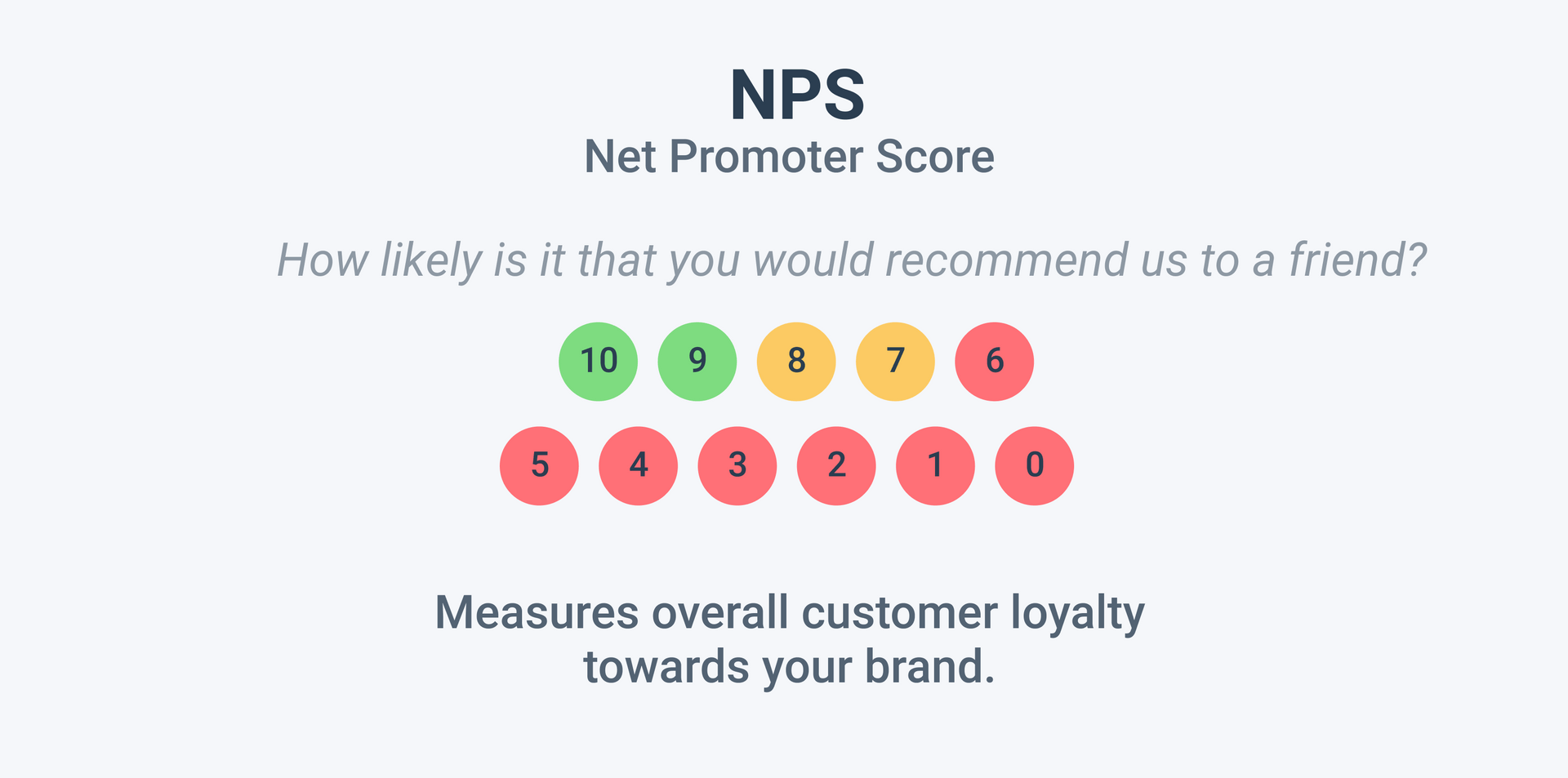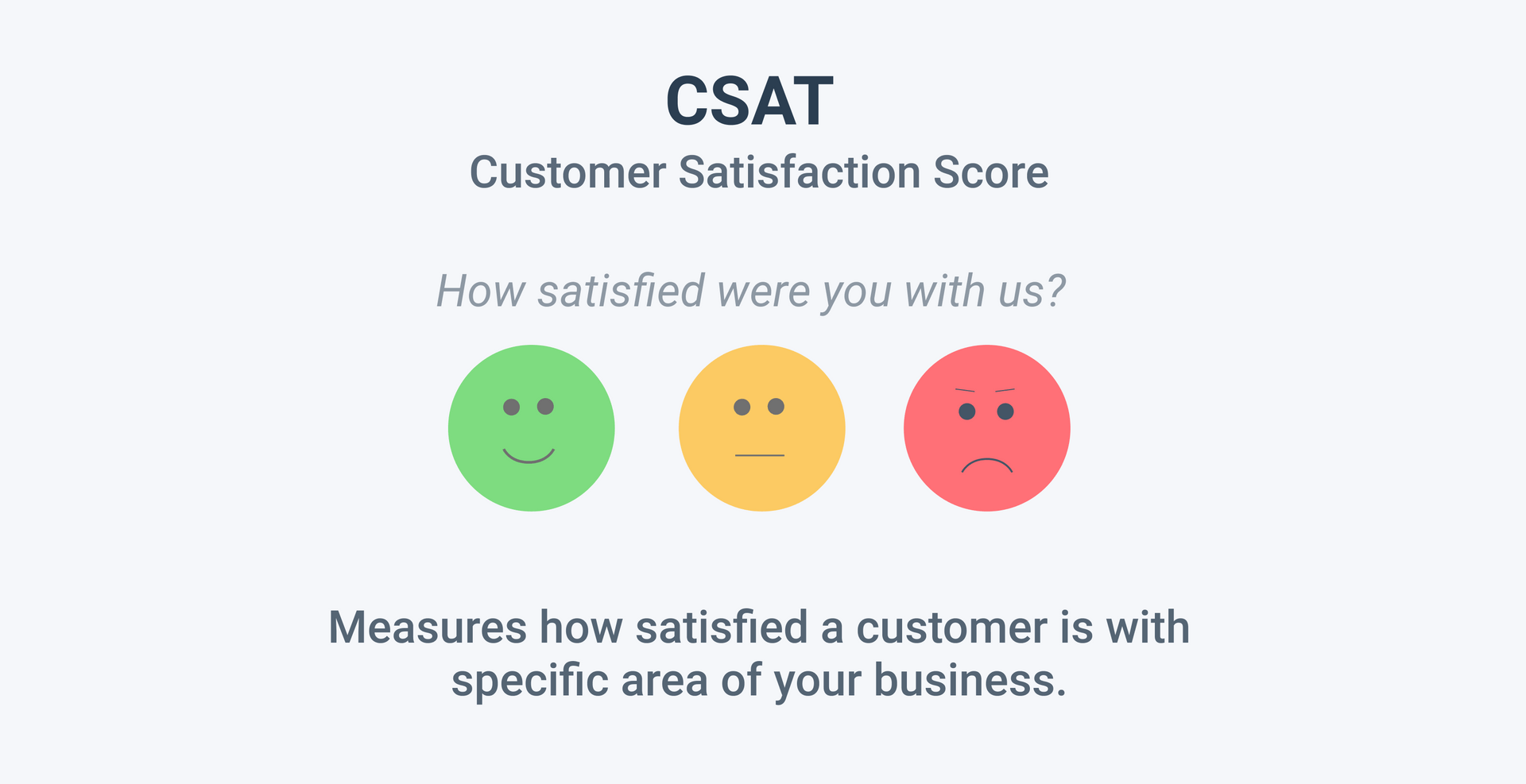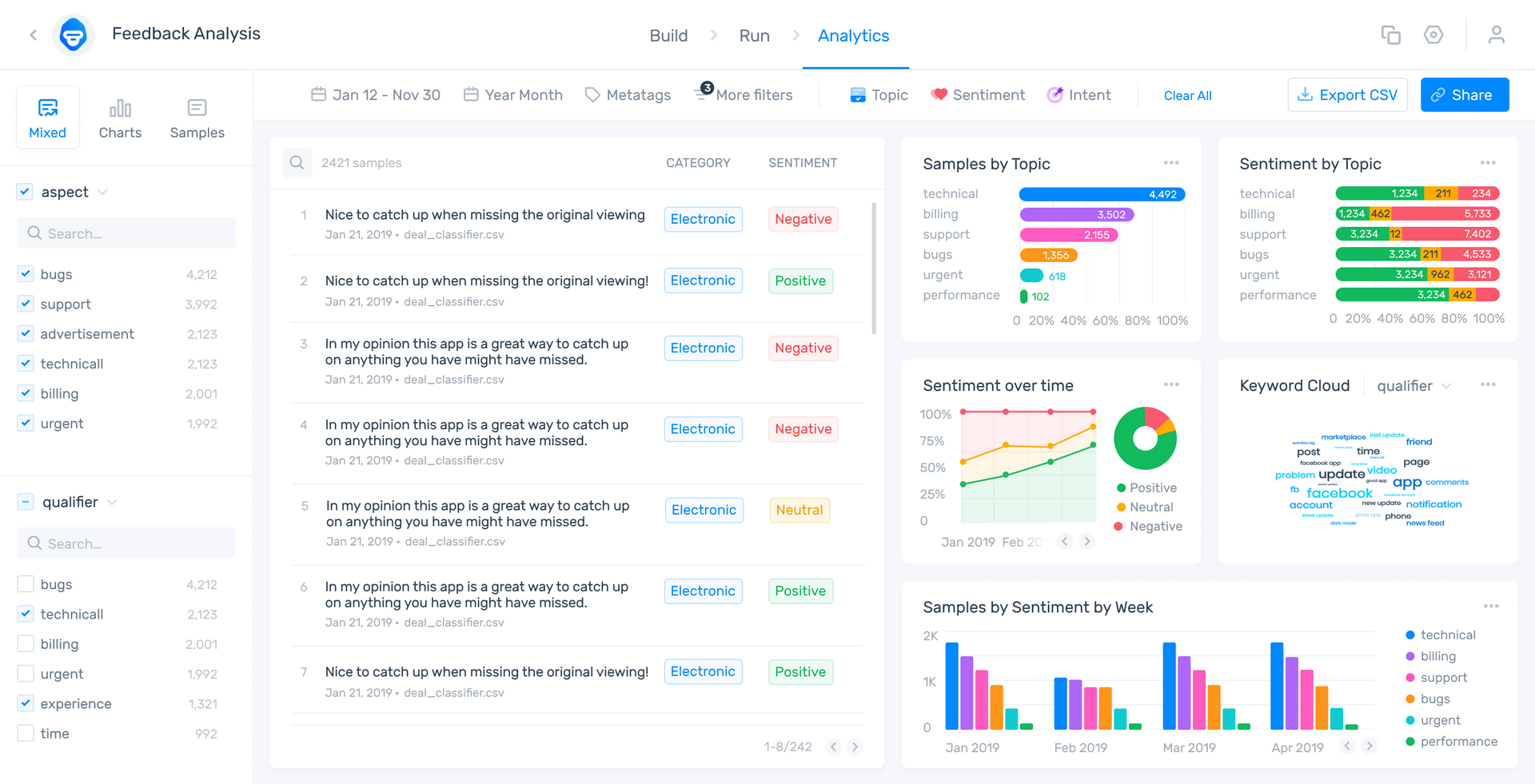How to Measure Customer Satisfaction & Why It’s Important?

The only way a business can thrive is by generating happy customers, which is why you need to measure customer satisfaction.
Sending customer satisfaction (CSAT) surveys is the most popular way to measure customer satisfaction. However, there are other ways to measure how happy your customers are.
In this guide we’ll go over some of the other methods for measuring customer satisfaction, and dive into why it’s important to keep track of how your customers feel.
- Why it's Important to Measure Customer Satisfaction?
- How to Measure Customer Satisfaction
- 6 Steps to Measure Customer Satisfaction
Why It's Important to Measure Customer Satisfaction?
Happy customers are a sign of a successful business, so it’s important that you keep track of customer satisfaction.
The easiest way to measure customer satisfaction involves sending out CSAT surveys and calculating your overall CSAT scores. However, to find out why your customers are satisfied or not, you’ll also need to ‘measure’ your qualitative CSAT data.
This can be done by including open-ended questions in your CSAT surveys or by gathering customer feedback from all over the web (reviews, social media) and your internal data (customer support tickets, chats).
Once you’ve collected your text data, you’ll need to analyze it to identify ways to enhance your customer experience and make sure you meet and exceed your customers’ expectations.
Once you’ve calculated your CSAT score and ‘measured’ or analyzed customer satisfaction in your qualitative feedback, you’ll be able to make informed decisions that lead to:
- Increases customer loyalty: a recent survey shows that 56% of customers would spend more on a brand they love, even if there are cheaper options. Building strong, long-term relationships with your customers and keeping them happy ensures they will continue to come back time and time again. Measuring customer satisfaction over time helps you find out if you are routinely living up to their expectations.
- Lower customer churn: sometimes it only takes one negative experience for a customer to churn. Knowing what drives customer satisfaction helps you retain existing customers, and identifying what makes customers unhappy gives you a chance to fix issues.
- Word-of-mouth promotion: happy customers will share their positive experiences and recommend your business to their friends and family. They might even become brand advocates, spreading the word on social media, and increasing brand exposure. Analyzing NPS surveys can help you identify your promoters – those customers that are extremely satisfied with your business – so you can engage with them at every opportunity.
- A competitive advantage: A 2020 study from Walker said that businesses will focus primarily on differentiating themselves through the experience they deliver to customers. It also states that differentiating on price and products will become less important. By measuring customer satisfaction to understand how to provide stellar customer experiences will definitely put you one step ahead.
How to Measure Customer Satisfaction
There are different approaches you can take to measure customer satisfaction. There’s no right or wrong here, but one thing is certain: rather than sticking to just one metric, it's better to combine different methods and techniques to gain a more accurate overview of customer happiness.
Here are some of the key sources of feedback and metrics you should track to measure customer satisfaction:
- Net Promoter Score (NPS)
- Customer Satisfaction Score (CSAT)
- Customer Effort Score (CES)
- Social Media Mentions
- Churn Rate
- Communications via Email, Chat, Calls, SMS
Net Promoter Score (NPS)

Net Promoter Score (NPS) asks customers the likelihood that they’ll recommend your brand to a friend or colleague, on a scale of zero to ten.

Companies use NPS surveys to quickly gauge customer satisfaction and loyalty. Based on their responses, you can segment customers into groups:
- Promoters (9 to 10): enthusiastic, loyal customers, who tend to purchase frequently and draw in new clients by spreading the word about your business.
- Passives (7-8): these customers show indifference towards your brand or products, and are at risk of switching to the competition.
- Detractors (0 to 6): unsatisfied customers who will not buy again from you or are at a high risk of churn. Detractors can harm your brand image by leaving negative feedback about your business on social media or product reviews.
To calculate the Net Promoter Score, you need to subtract the percentage of detractors from the percentage of promoters.
Besides the rating, there’s a qualitative side to NPS surveys as well. Through open-ended questions, you can ask customers to explain the reasons for their score, or provide feedback to help you improve:

This follow-up question provides an extra layer of insight to understand what drives customer sentiment. When you analyze open-ended survey responses carefully, you can hone in on exactly which aspects of your business are making customers unhappy.
Customer Satisfaction (CSAT) Score

A Customer Satisfaction (CSAT) Score measured the level of customer happiness. It may reflect an overall opinion about a brand, its products or services, or a particular aspect of the business, such as customer support.

Requesting feedback from clients at specific touchpoints of the customer journey ‒ for example, after making a purchase or interacting with your customer service ‒ allows you to collect instant and honest feedback from customers while their recent experience is still fresh in their mind.
CSAT surveys usually ask customers to rate their satisfaction level on a scale from 1 (very unsatisfied) to 5 (very satisfied). They may also include open-ended questions to allow for more detailed feedback about their experiences.
Analyzing CSAT scores allows companies to evaluate their performance. Since CSAT surveys focus on short-term experiences, you should also combine this metric with other customer satisfaction assessments, like Customer Effort Score and NPS score.
Customer Effort Score (CES)

The Customer Effort Score (CES) evaluates the customer experience. It asks customers how much effort they put into completing a certain action, such as solving an issue through customer support or completing a purchase.
For example, Hubspot asks users about the helpfulness of a knowledge-base article:


Customers value low-effort experiences, so this metric is a good indicator of loyalty and customer satisfaction. Also, CES surveys can shed light on bottlenecks and help you identify specific areas for improvement.
Social Media Mentions
Monitoring brand mentions on social media can help you understand how customers perceive your company and gauge their instant reactions following specific events, like a new marketing campaign, or a product release.
Unsolicited feedback offers a fresh perspective of customer satisfaction. By analyzing the sentiment of social media interactions, you can pinpoint what customers value about your brand and recognize potential issues or areas to improve. For example, a tweet from a disgruntled customer who’s been waiting a week to solve an issue indicates flaws in your customer support:

Churn Rate
Churn rate, also known as rate of attrition, refers to the number of customers that leave your company in a given time period. This is a critical metric when you’re analyzing customer satisfaction since it allows you to quantify unhappy customers.
For SaaS companies, for instance, sending a post-cancellation survey can be useful to figure out what went wrong with your customer’s experience, and identify any common trends or patterns which may be leading them to churn. These insights can then help companies improve their retention strategies.
Communications via Email, Chat, Calls, SMS
Every interaction with your customers is an opportunity to assess if they are happy (or not) with your brand, your products, or the service you are providing. Looking at qualitative data from customer service interactions can help you identify which are the most frequent issues they encounter, or which aspects of your business are confusing to them.
6 Steps to Measure Customer Satisfaction
- Make a Plan & Define Goals
- Choose a Tool to Measure Customer Satisfaction
- Collect Customer Data
- Analyze Customer Feedback
- Visualize Results
- Take Action
1. Make a Plan & Define Goals
The first step to measure customer satisfaction is to set out a plan. The following questions can help you lay the groundwork for the process:
- Why do you want to measure customer satisfaction?
- What methods will you use to collect feedback from your customers?
- Once you’ve gathered customer data, how are you going to analyze it?
- How will you address feedback from unhappy customers?
Answering these questions will help you define clear goals that you can measure over time.
2. Choose a Tool to Measure Customer Satisfaction
Based on your goals, decide which metrics will be most suitable to measure customer satisfaction. What type of surveys will you send? Are you going to collect unsolicited feedback as well?
Let’s say your goal is to improve your customer service performance. You can send CSAT or CES surveys after closing a support ticket, and include both close-ended and open-ended questions, in order to gather both quantitative and qualitative data. Also, you could analyze brand mentions referring to your customer support and draw insights from emails and chat conversations with support agents.
3. Collect Customer Satisfaction Data
Identifying your customer’s touchpoints is key to design an effective customer feedback system. Probably, most of the tools you are already using can help you collect and store feedback from your customers. Make sure to integrate survey tools, live chat platforms, emails, and social media data into your CRM, so you can access all your customer data in one place.
When it comes to building customer satisfaction surveys, keep in mind these two important aspects:
- Ask clear, concise, and specific questions. Keep your survey short to maximize response rates, and show customers that you value their time.
- Choose the right moment to request feedback. When are you going to send your survey? Acting fast can help you achieve better results. For example, if you want feedback to improve your purchasing experience, send a survey immediately after a customer makes a purchase to encourage more responses.
4. Analyze Customer Feedback
So you’ve gathered a high number of survey responses and other forms of feedback to measure customer satisfaction. What’s next? Analyze your data looking for insights to understand customer satisfaction.
You are probably looking at two types of data:
- Quantitative data. This is data you can measure and quantify, with a structured format that makes it suitable for statistical analysis. Close-ended questions in surveys ‒ like multiple-choice, rating-scale, and yes/no questions ‒ generate quantitative data.
- Qualitative data or unstructured data. This data is usually text-heavy and it’s not organized in a predefined manner. You can find it in open-ended survey responses, emails, chat conversations, and social media posts. Qualitative data describes and explains the reasons behind quantitative data. It’s often subjective and provides a rich insider’s view.
You can easily organize and analyze quantitative survey data in Excel, and visualize trends through graphics and cross-tabulation.
Qualitative, however, takes a lot longer to process and analyze if done manually. There’s good news, though: machine learning tools can speed up the process, by automatically classifying and extracting meaningful information from your qualitative data.
Not so long ago, adopting machine learning technology meant huge upfront investments. But now, SaaS companies like MonkeyLearn are enabling businesses to implement out-of-the-box machine learning solutions, as an alternative to building the software from scratch.
MonkeyLearn provides a set of intuitive machine learning tools that help you analyze large amounts of unstructured text and get actionable insights in real-time.
To measure customer satisfaction in open-ended responses, you’re best of using the sentiment analyzer, which helps you identify sentiment in customer opinions (and tag them as Positive, Negative, or Neutral).
You can also automatically tag feedback by topic, to understand which aspects of your company a customer is satisfied with or not. For example, this survey analyzer can detect if a piece of feedback refers to Customer Support, Pricing, Features, or Ease of Use:
Pre-trained models, like the ones above, are a great starting point for performing text analysis with machine learning. However, you can also build a model adapted to your particular business needs.
5. Visualize Customer Satisfaction Results
Turn your data analysis results into a powerful visual dashboard with MonkeyLearn Studio. This all-in-one solution allows you to analyze datasets using pre-trained or custom models, and then create insightful reports to share with your teammates or stakeholders.
Check out this report showing fine-grained insights from Zoom reviews:

This dashboard organizes customer data in a clear, attractive, and insightful way. Graphics allow you to easily identify the main topics in customer feedback, as well as the sentiment.
Data visualization helps you uncover insights and trends that may not be so obvious in a spreadsheet. With a professional report in hand, you’ll be more than ready to turn your customer feedback into action.
6. Take Action
What are the main issues that make your customers unhappy? Set priorities, share your findings with your internal teams, and define your next steps to fix them. What can you do to improve your levels of customer satisfaction? Make adjustments based on your customer’s input and keep track of your metrics to see how they evolve over time.
Maybe you decide to improve your customer service with AI tools, like a chatbot to handle routine queries round the clock, or implement an automated ticket routing system to improve first-time response rates. Either way, make sure to collect and analyze feedback periodically to measure any changes in customer satisfaction.
Finally, don’t forget about your promoters! They already love and support your brand, so you encourage them to talk about your brand or join a loyalty program.
Final Words
Measuring customer satisfaction gives you an accurate idea of how customers feel about your brand and shows you which aspects of your business need improving. This in turn helps you ensure an excellent customer experience at every step of the customer journey.
Metrics like NPS score or Customer Effort Score (CES) are important to know where you stand and benchmark your performance against your competitors. But the most insightful and actionable feedback comes from qualitative data.
Machine learning tools, like MonkeyLearn, help you make sense of your qualitative data and dig deeper into customer satisfaction. Want to see how we can help you gain more valuable customer satisfaction insights?
Request a demo and we’ll walk you through our suite of text tools.

Rachel Wolff
January 13th, 2021






